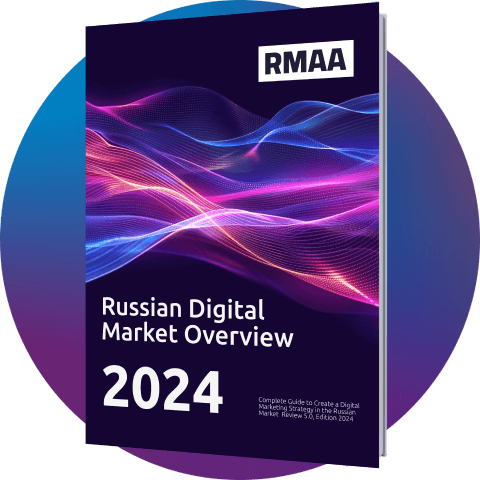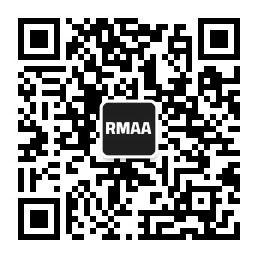Blog about successful marketing strategies in russia
Overview of the Russian Car Market: Leading Brands, Manufacturers, and Dealers


B2B MARKETING
Share this Post
In 2024, 1.57 million new motor cars were sold in Russia. It’s an increase of 48% compared to the previous year. This growth not only allowed the market to recover but also propelled it to 11th place in the world, almost closing the gap with South Korea (1.63 million). Only 60,000 cars separate Russia from the top 10 largest car markets.
For context: the top 10 includes giants like China (26 million), the USA (15.9 million), India, Japan, and Germany. Today, Russia is the largest expanding market in Europe and a key attraction point for Chinese car manufacturers.
The country showed the highest growth rate among the top 20 largest car markets worldwide. With only 60,000 cars behind South Korea, Russia is steadily progressing towards rejoining the global top 10.
| Country | Sales, mln units | 2024/2023 | Population, mln | Car sales per 100 persons |
|---|---|---|---|---|
| China | 26.05 | +4.3% | 1,419.3 | 1.8 |
| USA | 15.94 | +3.9% | 345.9 | 4.6 |
| India | 4.27 | +9.3% | 1,429.6 | 0.3 |
| Japan | 4.25 | +12.7% | 123.8 | 3.4 |
| Germany | 2.81 | -11.4% | 84.6 | 3.3 |
| Brazil | 2.48 | +12.0% | 210.0 | 1.2 |
| UK | 2.30 | +17.9% | 52.7 | 4.4 |
| Canada | 1.83 | +8.6% | 47.0 | 3.9 |
| France | 1.72 | -5.2% | 87.5 | 2.0 |
| South Korea | 1.63 | -0.3% | 56.3 | 2.9 |
| Russia | 1.57 | +48.0% | 106.1 | 1.5 |
| Italy | 1.54 | +19.0% | 58.1 | 2.7 |
| Mexico | 1.43 | +24.0% | 56.4 | 2.5 |
| Turkey | 1.23 | +57.0% | 85.1 | 1.4 |
| Australia | 1.20 | +17.0% | 45.1 | 2.7 |
| Spain | 0.95 | +8.0% | 35.3 | 2.7 |
| Iran | 0.92 | -1.5% | 88.1 | 1.0 |
| Indonesia | 0.86 | -0.9% | 278.7 | 0.3 |
| Malaysia | 0.72 | +7.0% | 32.3 | 2.2 |
| Thailand | 0.75 | +2.0% | 71.7 | 1.0 |
But it's not just China that is interested in the Russian market. Increasing interest is also being recorded by other foreign companies, from logistics operators to distributors, marketplaces, and tech brands. The key is understanding who you are competing with, how distribution works, and which promotion channels are effective in 2025.
Details to follow.
Russian Car Market Structure
After the departure of European, Japanese, and American automakers in 2022, the Russian market did not collapse — it adapted. The vacuum left by these companies was quickly filled by Chinese brands. They moved in rapidly, systematically, and with a long-term presence in mind.
By 2023, China had exported 841,000 vehicles to Russia. By the end of 2024, the export volume exceeded 1 million cars, making Russia the largest foreign market for Chinese automotive manufacturers.
This shift has had a direct impact within the country. By the end of 2024, more than 54% of all new passenger cars sold in Russia were of Chinese origin. Six Chinese brands are already in the top 10 best sellers. Some of them, like Omoda, only entered the Russian market two years ago but have since opened dozens of dealerships and secured prominent positions in the rankings.
The Lada brand remains the best-selling in the country, largely due to government contracts and subsidies. Last year, AvtoVAZ sold 436,155 vehicles, accounting for about 28% of the new car market. Lada Granta remains the top-selling model, with sales up by 3% compared to the previous year, reaching 203,432 units.
The former Renault and Nissan plants are not idle. Today, they are assembling adapted Chinese models. For example, the Moskvich 3 crossover has emerged as a localized version of the JAC JS4.
The rise of China’s market share is not a temporary substitution, but a systemic trend. In just two years, Chinese manufacturers have built a full infrastructure, from logistics to marketing and customer service. Foreign brands planning to return to Russia or enter the market for the first time now face a new type of competition — fast, local, and digital.
Top 10 Auto Brands in Russia
The top three spots in the ranking are held by Lada and Chinese brands. By the end of the year, they form the core of the Russian automotive market.
Top 10 automotive brands in 2024-2025:
| Brand | 2024 Sales (units) | February 2025 (units) | YoY Change (vs Feb 2024) |
|---|---|---|---|
| Lada | 436,155 | 24,500 | -14% |
| Haval | 190,624 | 9,500 | -20% |
| Chery | 157,899 | 8,300 | -15% |
| Geely | 149,924 | 5,100 | -58% |
| Changan | 103,388 | 4,400 | -26% |
| Omoda | 43,000 | 2,040 | -34% |
| Exeed | 42,000 | 1,400 | -57% |
| Belgee | 35,000 | 2,000 | +92% |
| Jetour | 30,000 | 1,700 | +22% |
| Jaecoo | 28,000 | 1,600 | +39% |
Lada maintains its strong leadership with sales exceeding 436,000 vehicles in 2024. However, data from February 2025 shows an overall slowdown in the market, particularly among major Chinese brands. Geely, Exeed, and Omoda have recorded a noticeable decline compared to the same month last year. This may be due to supply delays, seasonal demand drops, or adjustments to inventory after aggressive sales in the previous year.
Against this backdrop, emerging brands like Belgee, Jetour, and Jaecoo are showing growth. Their positive trend indicates that they are successfully scaling their businesses and building local market entry strategies. If this trend continues, they may pose a challenge to more established Chinese players by the end of 2025.
Overall, the Russian car market remains under the control of Chinese brands. However, competition is beginning to grow in the second-tier segment. For foreign companies considering entering or re-entering the market, the key factors will be the adaptation speed and precise timing of entry.
Why Chinese Brands Are Selling and How They Do It
The success of Chinese automakers in Russia is no coincidence, nor is it solely about pricing. It is the result of a clear strategy: aggressive distribution, adapted marketing, strong digital presence, and a focus on building trust through content.
- They Filled the Vacuum First
After the departure of European and Japanese brands, Chinese companies didn’t just enter the market. They quickly launched supplies, began assembling locally, and opened dealerships in key regions. As a result, Haval, Chery, and Geely were in the right place ahead of their competitors. - They Bet on Telegram and Influencers
In recent years, Chinese brands have been among the few to adapt effectively to the Russian media landscape. They launched their own Telegram channels, began working with automotive bloggers, and started producing video reviews and integrations. Where Western companies hesitated, the Chinese brands acted.Chery Russia Sales results for the TIGGO 7 PRO MAX crossover in the Chery Russia official Telegram channel.
The post above is a typical example of a content strategy used by a Chinese automaker on Telegram. It’s not an ad, but regular short updates, visual proof, and highlights on growth and customer loyalty. - Investing in Local Content
Videos with test drives, comparisons with competitors, and direct work with distributors. Activities are launched in each region: from test days to collaborations with local media and other well-known brands.Native collaboration message from OMODA and STARS COFFEE in the brand’s official Telegram channel is an example of how the automotive industry is entering lifestyle communication.
- Focus on Visual Language and Young Audiences
The marketing of Omoda and Jaecoo is focused not on family comfort, but on visual appeal, excitement, and style. A bright brand, distinctive optics, active social media presence — all this works to build loyalty among a new audience that previously bought Kia or Volkswagen.
A prime example is the post from Jaecoo in VK with a retrospective of off-road tests of the J8. Instead of dry press releases, the brand works through the image of a hero (Dakar pilot Sergey Karyakin), an award (‘Newcomer of the Year’), and emotion, with a competition, behind-the-scenes video, and an invitation to join the community.
-
Chinese brands are actively testing Telegram bots, online bookings, instant quizzes, and UGC mechanisms. Direct communication, quick feedback, and a clear path from interest to purchase — there are no gaps between advertising and actual sales.
An example is the Haval H7 promotion with brand days on Telegram. An online interest quiz, a personalized introduction to the model, offline test drives, plus photo zones, quizzes, and activities for the whole family. This isn’t just car advertising; it’s an engagement scenario, with Telegram becoming the first step to the dealership.
How Many Auto Dealers Work in the Russian Market?
At the beginning of 2025, there were 4,040 officially operating car repair, sales, and service centers in Russia. This is 500 centers more than in 2024.
Jaecoo made the fastest start, opening 158 sales points from scratch. Jetour established 145 centers, and Kaiyi set up 105. In total, 19 new Chinese brands were launched in the country.
Among the previously present Chinese brands, many have expanded their presence. Changan opened an additional 40 sales centers, Omoda launched 18 new dealerships. Geely (+27), Voyah (+20), FAW (+24), Haval (+36), and Exeed (+47) also expanded their dealer networks in Russia.
Also, Russian brands have expanded their footprint in the Russian car market. By the end of 2024, Moskvitch had already opened 52 dealerships in 23 cities across Russia. In the fall, the company held a tender to select new partners, and by December, car deliveries began to 11 dealerships in Moscow. At the same time, the brand selected 20 new dealers in 12 major cities, including Stavropol, Tyumen, Omsk, Orenburg, Chelyabinsk, Krasnoyarsk, Perm, Volgograd, Kazan, Voronezh, Samara, and Saratov. The first shipments to these regions started in February 2025. Over the course of the year, the Moskvitch network grew almost five times — from 11 to 52 points, making it one of the largest expansions in the Russian automotive market.
The majority of brands from the Americas, South Korea, Japan, and Europe have been eliminated. In 2025, further growth is expected, primarily driven by Chinese and Russian manufacturers.
The Automotive Market at the Start of 2025: A Decline After Growth and an Opportunity for Targeted Solutions
In the first quarter of 2025, 247,000 new cars were sold in Russia. This is 25% less than in the same period in 2024. After two years of growth, the market has entered a cooling phase. However, the drop in sales doesn’t mean that interest in cars has decreased. The reasons lie in systemic constraints that have started to impact consumer behavior.
The high interest rate has made car loans less accessible. Since the beginning of the year, the recycling fee has increased, raising the final price of cars. Additionally, in 2024, the market saw record supply volumes, and now there is a natural saturation. There is also general uncertainty, as many are waiting for the return of Western brands.
Nevertheless, the current situation is not a time to retreat. When the market is overheated, new players have to fight for survival. When it cools down, there is an opportunity to capture market share by precisely meeting demand. This moment requires a different approach — not a large-scale entry, but a careful and thoughtful move forward.
It makes sense to focus on stable segments. Compact urban cars, electric vehicles, and crossovers priced under two million rubles continue to attract consumer interest, despite the overall decline. There is still movement here, and the buyer hasn’t disappeared.
In addition to product focus, it’s important to rethink the sales model itself. Instead of the classic scheme, it’s worth considering options such as installments, subscriptions, or car-sharing — any formats that reduce the immediate financial burden. Flexibility becomes a competitive advantage, especially in the face of high ownership costs.
In these conditions, it’s better to enter carefully, with one localized product to build from. This allows for gathering accurate feedback and scaling sales based on it, avoiding unnecessary costs and mistakes. Haste will only harm here.
The winners in 2025 will be those who can communicate with the audience calmly and clearly, not through loud campaigns, but through simple tools: local Telegram channels, convenient landing pages, adapted CRM systems, and direct communication without intermediaries. Times are changing, but the key remains — those who listen to their customers will come out ahead.
Conclusion
The Russian car market didn’t just recover after 2022, it became different. The players, channels, consumer expectations, and market entry logic have all changed. China has taken its share, but hasn’t covered all niches. There is still space, especially for those who think differently.
If you are a foreign brand considering Russia, it’s important to understand that in 2025, universal strategies don’t work here. What works are those who know the market at the regional level, through numbers, behavioral scenarios, and local distribution specifics. This is what we specialize in.
We don’t offer templates. We help build a route tailored to your specific brand: from assessing potential to launching sales. If you are ready to consider Russia not as a risk, but as a market, let’s have a real conversation.
Write to us, and we’ll show you where it’s truly possible to sell in Russia.
Fill out the form below, and we’ll contact you to discuss specific market entry opportunities.
Join 2,000+
of your Peers!
You will be the first to know about Russian marketing insights, news and updates from our agency. Stay tuned!
Get our latest articles delivered to your email inbox and get our exclusive White Paper
"How to sell to Russian large companies?"
for FREE!
Russian Digital Market Overview
Strategic Insights into Russian Digital Marketing Landscape

Ready to partner with the specialists in Russian marketing and advertising?
About the Author
Digital Strategist. Head of one of the project groups at RMAA. Maria started her journey in digital marketing in 2009.
Join 2,000+ of your Peers!
Get our latest articles delivered to your email inbox and get our exclusive White Paper "How to sell to Russian large companies?" for FREE!
You will be the first to know about Russian marketing insights,
news and updates from our agency.
Stay tuned!
We're updating our website's design step by step, so some pages may look different. Thank you for your understanding.
Got it














